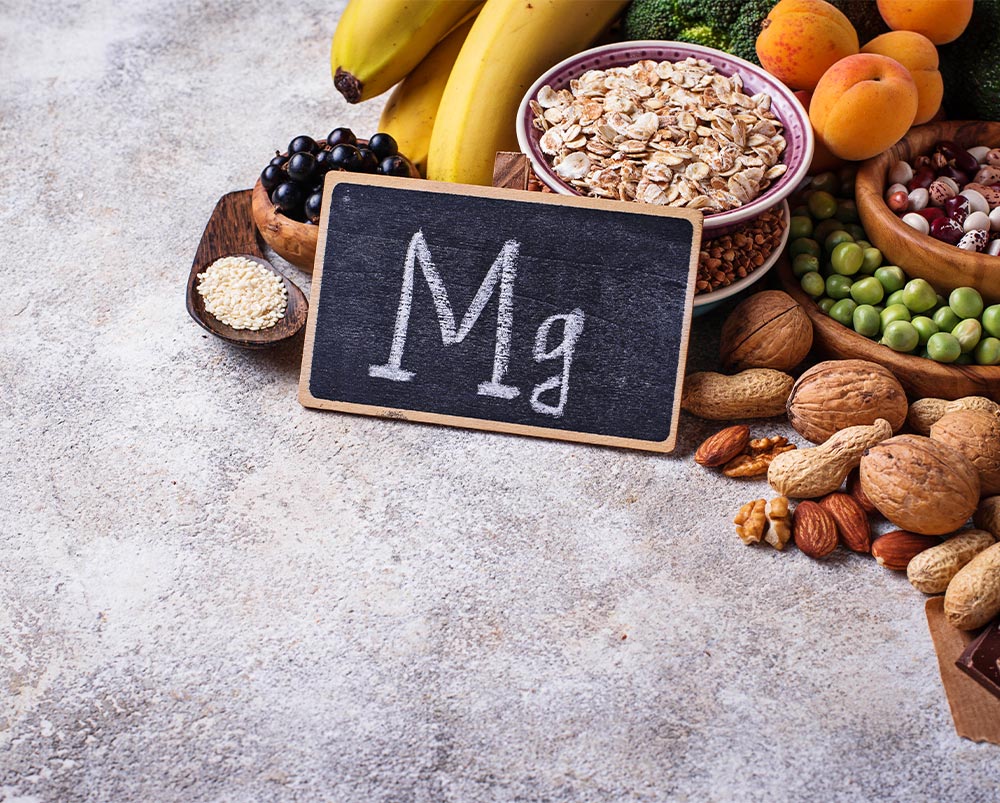If you wake up with stiff and painful joints, our blog is here to help. We'll explore the causes, symptoms, and treatments for joint pain. From differentiating types of joint pain to discussing common causes, we've got you covered. We'll also dive into specific joint pains like AC joint pain, knee pain, wrist pain, and TMJ disease. Plus, we'll address the connection between menopause and joint pain and provide tips on managing it during this stage of life. Say goodbye to stifling joints with our comprehensive guide!
Unraveling the Mystery of Joint Pain
Unraveling joint pain mysteries involves identifying inflammation, discomfort, and stiffness. Understanding symptoms is crucial for tailored treatment plans. Managing painful joints is vital for an enhanced quality of life, as specific types require individualized approaches. By recognizing the cause, treatment can be optimized for the joint area, minimizing side effects and enhancing overall well-being.

Differentiating Between Types of Joint Pain
Understanding joint pain spans from soreness and aches to swelling and stiffness. Osteoarthritis and rheumatoid arthritis represent different types of joint pain, each requiring tailored treatment approaches. Accurate diagnosis is crucial, given the nuances of joint pain symptoms and causes. Distinguishing between types guides individualized care and management, addressing specific needs for improved quality of life.
Common Cause of Joint Pain
Joint pain may arise from autoimmune disorders and inflammation, with bursitis, tendinitis, and bone spurs being common culprits. Identifying the cause is vital for treatment planning, as joint pain can stem from the immune system and cartilage issues. Understanding these causes helps select appropriate treatments. Recognizing the most common causes of joint pain is essential for targeted and effective treatment.
Going Deep into Specific Joint Pains
Navigating through specific joint pains, like AC joint pain, requires tailored treatment plans to improve range of motion and comfort. Understanding the implications of joint pain is crucial for effective management and personalized treatment. Identifying the type of joint pain, such as gout or lupus, leads to targeted interventions and minimizes side effects. Managing specific joint pains demands a thorough physical exam, blood tests, and collaboration with a physical therapist.
AC Joint Pain and Its Implications
AC joint pain significantly impacts daily activities and comfort levels. Pinpointing the root cause is crucial for effective treatment, enhancing the overall quality of life. Tailored management reduces stiffness and soreness, improving mobility and well-being. Understanding the implications aids in formulating personalized treatment plans, ensuring a more targeted and effective approach.

Understanding the Nuances of Knee Pain
From mild discomfort to severe swelling and redness, knee pain varies in intensity. Causes like osteoarthritis and tendinitis demand accurate diagnosis for personalized treatment. Tailored knee pain management enhances mobility and reduces inflammation, significantly improving daily activities and overall well-being. Accurate diagnosis is key, leading to effective treatments that enhance the patient's quality of life.
Wrists Hurt: More than Just an Annoyance
Wrist pain, more than a nuisance, can significantly limit daily activities and lead to numbness. Understanding its causes is crucial for effective treatment plans tailored to alleviate discomfort and improve range of motion. Personalized care for wrist pain ensures enhanced quality of life and comfort, making it imperative to identify the nuances for accurate and personalized treatment.
The Relationship Between Menopause and Joint Pain
Understanding the impact of menopause on joint pain is crucial for personalized care and treatment planning. Biological changes during menopause can lead to painful joints, affecting comfort and mobility. Accurate diagnosis of joint pain in menopause paves the way for tailored treatments that enhance the quality of life. Managing joint pain during menopause results in improved comfort and mobility, reducing the impact of this natural biological transition.
TMJ Disease: A Closer Look
TMJ disease, characterized by discomfort and limited motion, often causes pain in the jaw joint, face, and neck. Clicking or popping of the jaw joint may indicate TMJ disorders. The resulting discomfort can significantly impact daily activities. If experiencing such symptoms, seeking medical help is crucial for proper diagnosis and management.

Symptoms and Causes of TMJ Disease
Discomfort when biting, chewing, or yawning is a common symptom of TMJ disease, often accompanied by tenderness and swelling. Stress and teeth grinding are frequent causes, sometimes leading to aching pain around the ear. Seeking medical treatment can effectively manage TMJ disease symptoms, improving overall quality of life.
Therapies for Temporomandibular Joint Dysfunction
Improving the quality of life is achievable through effective TMJ disease treatment. Utilizing physical therapy, pain-relieving injections, and splints or braces helps alleviate symptoms. Additionally, supplements and medications play a crucial role in managing the condition. Proper treatment not only relieves discomfort but also enhances overall well-being, making daily activities more manageable and enjoyable.
Painful Knee When Bending: What Does It Indicate?
Experiencing knee pain when bending? It could be a meniscus tear, ligament damage, or cartilage issues. Don't ignore the pain - consult a medical professional to determine the cause and find appropriate treatment for your knee discomfort.
Inner Knee Pain vs Back of Knees Hurt
When bending, inner knee pain could indicate a medial meniscus tear, while outer knee pain may point to a lateral meniscus tear. Additionally, inner knee pain could signal a ligament injury, whereas outer knee pain might be a sign of cartilage issues. Consulting a medical professional is crucial for diagnosing and addressing both inner and outer knee pain.

Dealing with Shoulder Pain
Shoulder pain may stem from bursitis, tendinitis, or arthritis, limiting joint range of motion. Seeking medical help is vital, as painful symptoms can impact daily life. Alleviate shoulder pain with physical therapy and massage, improving your quality of life. Don't let shoulder pain hold you back - take charge of your health and seek effective solutions to regain pain-free movement and activity.
Common Causes and Remedies for Hurt Shoulder
Shoulder pain symptoms, like aching and limited movement, may stem from shoulder impingement or rotator cuff injuries. Remedies include rest, ice therapy, and corticosteroid injections to reduce inflammation and pain. Additionally, physical therapy and shoulder exercises aid in the recovery process, enhancing joint mobility and strength. Consulting a medical professional for personalized care is crucial for effective treatment.
Ankle and Knee Pain
How Often Should You Consult a Doctor for Joint Pain?
Regular consultation with a doctor is crucial for managing joint pain. Seek medical help if symptoms persist or impact daily activities. Routine check-ups aid in early detection and monitoring of underlying causes. Do not hesitate to consult a healthcare professional for effective management of joint pain.
Joint Stiffness and Arthritis
Persistent joint stiffness can have various causes, including injury, overuse, or arthritis. It's important to consult a medical professional for an accurate diagnosis. Arthritis is a common cause of joint stiffness and can lead to inflammation and joint damage. There are different types of arthritis with unique symptoms and treatments. If you're experiencing persistent joint stiffness, seek healthcare advice for proper assessment and diagnosis. Treatment options may include medication, physical therapy, and lifestyle modifications like exercise and weight management.
Conclusion
In conclusion, understanding joint stiffness is crucial for maintaining overall joint health and quality of life. Whether it's knee pain, shoulder pain, or TMJ disease, knowing the causes and appropriate remedies can make a significant difference in managing joint discomfort. It's important to differentiate between different types of joint pain and consult a healthcare professional if the pain persists or worsens. Additionally, taking proactive measures such as maintaining a healthy lifestyle, exercising regularly, and seeking appropriate medical advice can help alleviate joint stiffness and improve mobility. Remember, your joints play a vital role in everyday activities, so prioritizing their well-being should be a top priority. Take charge of your joint health and enjoy a pain-free and active lifestyle.
References:
National Institute of Arthritis and Musculoskeletal and Skin Diseases
"Joint Pain Causes, Symptoms & Treatment." Cleveland Clinic
"Arthritis Types." Arthritis Foundation
"Joint Stiffness: Causes and Treatment Options." Mayo Clinic





Leave a comment (all fields required)